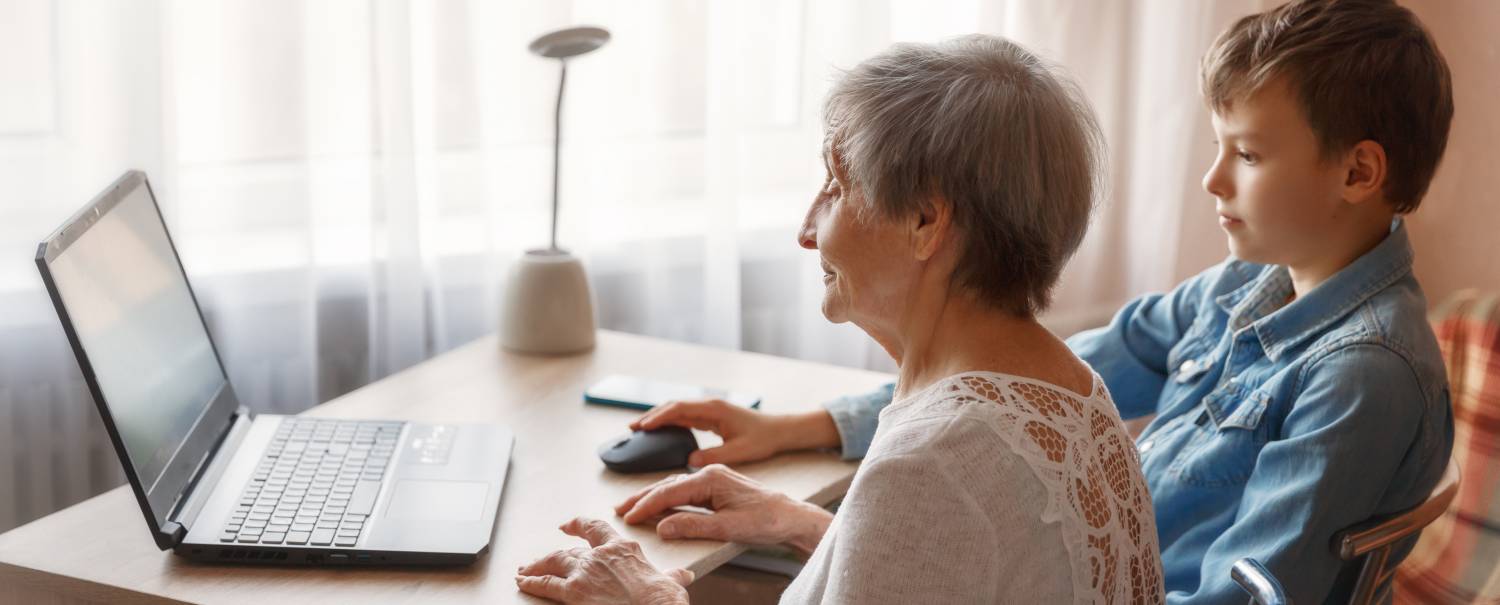The digital divide and the elderly
TOPIC OF THE MONTH
Share
The pandemic has accelerated the digitalisation of many day-to-day activities, the way of working and even how we interact with each other. The so-called information and communication technologies (ICT) offer us numerous advantages, such as better access to information, immediacy, reductions in costs and time, or an improved connectivity between people. But.... Did you know that digitalisation is not the same throughout the world, or for everyone? There is an imbalance called the digital divide which affects different social groups of the population, but one in particular: our elderly. Below, we tell you what the so-called digital divide is, how it affects this part of the population and, above all, how we can help them.
What is the digital divide?
We understand the digital divide as the inequality in the access, use or impact of information and communication technologies (ICT) between different social groups, whether they are geographical, economic, cultural, relating to disabilities, gender or age. Nowadays, in light of these points, we can talk about two types of digital divide:
- The access divide: refers to the impossibility that some groups face in accessing this resource. Although there are a wide range of causes, it is usually related to socio-economic differences between people and between countries, since digitalisation requires costly investments and infrastructure.
- The use divide: refers to the lack of digital skills which prevents people using ICT, both for personal and professional use.
The digital divide in the elderly
Nowadays, technology affects nearly every aspect of our day-to-day lives. This change, which began with the arrival of the internet, has been gradual over the years. However, the pandemic caused by Covid-19 in 2020 advanced the transfer of most activity to online environments, including some essential services like health or finance. The elderly were faced with this change without being prepared and this further increased the digital divide that already existed in this sector of the population.
In Spain, the biggest digital divide is among people over the age of 65. The Barometer of the Democratic Union of Pensioners and Retired People of Spain (UDP) highlights the dimension of this digital divide: 40.5% of the elderly say they have never accessed the internet. This is due to several reasons:
- They have been thrown head first into a complete digitalisation. Services that they thought they could use normally have become digitalised and they can no longer access them.
- They haven’t received any technology training in the past.
- Disinterest in learning, as they didn’t think they would need technology training to perform their everyday activities in the future.
- They don't have access to internet or technological tools, such as computers or smartphones.

How we can help them: the role of society
The consequences of this digital divide are evident and affect many aspects, including, for example, not being able to perform health or administrative management, banking or online shopping. But, undoubtedly, the biggest consequence of the digital divide has been revealed as a result of the pandemic: loneliness. Given how much they have helped us throughout our lives our, now it’s in our hands to break this digital divide as far as possible and bring our elderly closer to technology. How can we do it?
- By helping: show them we are always willing to help them with any digital issue they have. Ensure they aren’t afraid or embarrassed to ask for help and don’t feel they are disturbing us.
- Teach them the basic notions: explain to them that, in the world we live in, it is necessary to have basic digital skills that will be very useful in their everyday lives. For example, learning to use a smartphone to make video calls or send voice messages and be more connected with their family or friends.
- Sign them up to computer literacy courses: find out from your local council or nearest social centre about basic courses on how to use the internet. There is always something available!
- Give them as much information as possible: to prevent confusion or the much-feared phishing (scams that aim to obtain private information about users through the internet, particularly to access their accounts or bank details), we can create them a PayPal account which is more secure and teach them never to click on links or give out their bank details.
Family play an essential role when it comes to bringing the elderly closer to technology, but it is also up to us to have some empathy and help them from the work we do, whether it is with patience or using ways to access digital services that are easier and more intuitive for them.

Nuevo rol del consumidor
Leer más
Nuevo rol del consumidor






